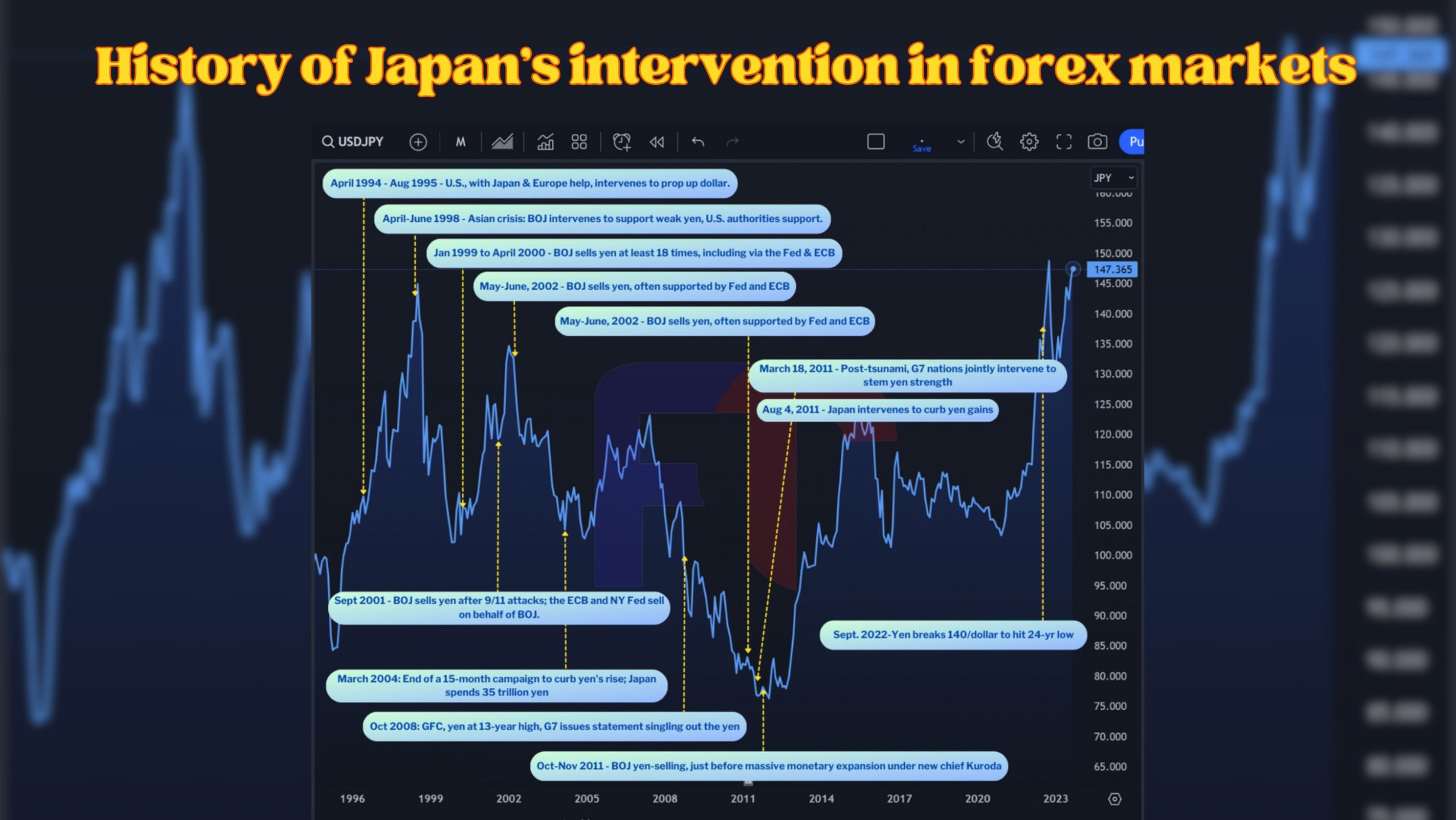Historical Background
Japan’s intervention in currency markets is a complex and multifaceted strategy that has been employed by the Bank of Japan throughout history. The purpose behind these actions is to exert influence over the value of the yen, a critical aspect of the country’s economic stability. By carefully managing the exchange rate, Japan aims to maintain a balanced and competitive position in the global market.
These interventions have occurred at different points in time and have served various objectives. One of the primary goals is to ensure stability within the currency market. By actively participating in currency trades, the Bank of Japan can prevent excessive fluctuations in the yen’s value, which can have detrimental effects on the economy. This stability is vital for both domestic and international investors, as it fosters confidence and encourages long-term investment.
Furthermore, Japan’s currency interventions have also been used as a means to boost the country’s export sector. A weaker yen can make Japanese goods more affordable and competitive in foreign markets, thereby stimulating demand and increasing export volumes. This strategy has proven particularly effective during periods of economic downturn or when faced with intense competition from other nations.
consequences for an economy. Japan has been grappling with deflation for many years, and it has been a major concern for policymakers. In response, the Japanese government has implemented various measures to combat deflation and stimulate economic growth. These interventions have included monetary easing, fiscal stimulus, and structural reforms. While the effectiveness of these measures has been a subject of debate, they have undoubtedly played a significant role in Japan’s efforts to combat deflation.

Motivations for Intervention
There are several motivations behind Japan’s intervention in currency markets. These include export competitiveness, exchange rate stability, and economic growth. By influencing the value of the yen, Japan aims to support its export-oriented economy, protect domestic industries, and maintain stable economic conditions.
Methods of Intervention
Japan employs various methods to intervene in currency markets. These include foreign exchange operations, currency swaps, and verbal interventions. The Bank of Japan buys or sells yen in the foreign exchange market, enters into currency swap agreements, and uses verbal communication to influence market sentiment and exchange rates.


Impacts of Intervention
The intervention in currency markets by Japan has significant impacts on both domestic and global economies. It affects trade balances, competitiveness, and financial markets. The outcomes of these interventions can lead to changes in export volumes, inflation rates, and investor sentiment, influencing the overall economic landscape.
Here is a timeline of selected moves in FOREX markets by the Bank of Japan.
1973 – Japanese monetary authorities decide to let the yen float freely against the greenback.
1985 – The Group of Five industrial nations, the predecessor to the G7, sign the Plaza Accord in which they agree that the dollar is overvalued and that they will move to weaken it.
1987 – In February, six of the G7 nations sign the Louvre Accord, which aims to stabilise currencies and halt the dollar’s broad decline.
1988 – On Jan. 4, the dollar falls to a post World War Two low of 120.45 yen in Tokyo trade. The Bank of Japan intervenes to buy dollars and sell yen.
1991 – 1992 – Bank of Japan intervenes to support the yen, selling U.S. dollars.
1993 – Bank of Japan sells yen through much of the year to curb its strength.
April 1994 – August 1995 – Dollar sinks to a record low against the German mark and a post-war low against the yen. The United States intervenes repeatedly, often with Japanese and European central banks, to prop up the greenback.
1997 – 1998 – The Asian financial crisis sees the yen weaken to nearly 148 to the dollar in August, even after U.S. authorities join the Bank of Japan to buy yen.
January 1999 to April 2000 – Bank of Japan sells yen at least 18 times, including once via the Federal Reserve and once via the European Central Bank, due to worries a strong yen will choke off an economic recovery. Yen continues to strengthen.
Sept. 2001 – Bank of Japan intervenes to sell yen after the Sept. 11 attacks in the United States. The ECB and New York Federal Reserve both operate on behalf of the BOJ.
May-June, 2002 – Bank of Japan intervenes to sell yen, often supported by the Federal Reserve and ECB. The yen continues to gain.
March 2004 – The end of a 15-month campaign to curb the yen’s rise in which Japan spends a total of 35 trillion yen, or more than $300 billion, on intervention.
Sept. 15, 2010 – Japan intervenes in the currency market for the first time in six years, selling yen to stem a rise in the currency after the dollar hits a 15-year-low at 82.87 yen.
March 18, 2011 – G7 nations jointly intervene to stem yen strength when the currency spikes to a record high in the aftermath of a massive earthquake, on speculation that Japanese firms would repatriate foreign assets to pay for reconstruction.
Aug. and Oct. – 2011 – Japan intervenes to curb gains that officials fear threaten to derail recovery from an economic slump triggered by the March earthquake and tsunami.
Conclusion:
Japan’s involvement in currency markets has been instrumental in shaping its economic path. These interventions have effectively preserved export competitiveness, stabilized exchange rates, and addressed deflationary pressures. Gaining an understanding of the historical importance and underlying reasons for these measures offers valuable perspectives on Japan’s economic strategies and their impact on the global stage.
Where to contact us :
Website : www.forextrade1.co
Twitter : www.twitter.com/forextrade11
Telegram : telegram.me/ftrade1
Facebook : www.facebook.com/Forextrade01
Instagram : www.instagram.com/forextrade1
YouTube : www.youtube.com/ForexTrade1
Skype : forextrade01@outlook.com
Email ID : info.forextrade1@gmail.com
Discord : https://discord.gg/vEk98ZvrHP
LinkedIn : https://www.linkedin.com/company/forextrade11



